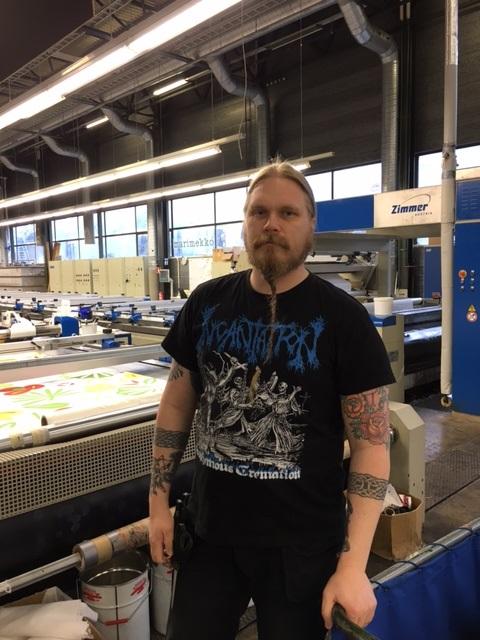Have you ever wondered who made your clothes? The annual Fashion Revolution campaign wants to shed light on the makers behind garments and promote a more sustainable fashion industry.
On 24 April 2013, the Rana Plaza building in Bangladesh collapsed. 1,138 people died and another 2,500 were injured, making it the fourth largest industrial disaster in history. The annual Fashion Revolution day that promotes a more sustainable fashion industry will take place on Tuesday 24 April 2018. Fashion Revolution is a not-for-profit campaign that strives to bring forth the makers of products and improve working conditions of the garment industry. The Fashion Revolution Campaign believes that the change for the better starts with a simple question: who made your clothes?
The sustainability of operations throughout our supply chain is very important to Marimekko and we want to do our part in promoting responsibility and transparency in the garment industry. About 70 % of Marimekko products are manufactured in Europe and the rest mainly in Asia. We want to pay special attention to the working conditions in our operations regardless of the manufacturing site or country.
We are proud of our skilled supplier network and all the employees that have their own stories to tell. In the spirit of Fashion Revolution we want to share some of them.
Marimekko textile printing factory, Helsinki
Marimekko’s textile printing factory is located in Helsinki and operates in the same building as the company’s headquarters. The location enables close and inspiring collaboration between the design and product development and printing factory professionals. The printing factory produces over a million meters of printed fabric annually including all of the textiles used in Marimekko home collection, fabrics sold by metre and some of the fabrics used in the ready-to-wear collections and bags and accessories. The fabrics used by the factory are sourced from Germany, Turkey, Peru and Baltic countries.
Ville Linnapuomi has been working as a sample printer for Marimekko for 10 years already: “I’m working at the sample printing machine. Our job is to make samples and prototypes of the prints before they go into production and make new colourways for archival prints. In addition, we test new base fabrics for printing and new fabric qualities.” According to Ville, the best part of his job is its versatility – the prints they work with change often ja and they also work with the other printing machines of the factory when necessary. After 10 years of working with sample printing, special projects offer the most inspiring challenges in Ville’s daily work. “For example, once we printed on a fabric made from a birch cellulose fiber. We only had a certain amount of the fabric and the job had to be done correctly in one go. Special projects like these are the most challenging parts of the job and bring a nice change to daily tasks.” Ville would also like to deepen his expertise in the field of printing even further in the future.
